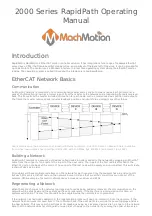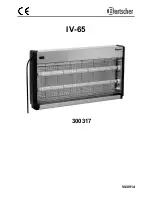
10
KB-KA 65
GB
Disassembly
Removal in reverse order.
Series production:
When machining several
round workpieces with the same radius, the
trimming fixture with blade
[1-5]
can be set to the
same position for all edge bands.
Edge band trimming process (see chapter Trim-
ming edge bands on round workpieces).
Tighten the rotary knob
[1-2]
before trimming
the edge band.
The trimming fixture with blade
[1-5]
is now set
and secured in the same position for all edge
bands.
Edge band trimming process (see chapter Trim-
ming edge bands on round workpieces).
Tighten the rotary knob
[1-2]
before trimming
the edge band.
The trimming fixture with blade
[1-5]
is now set
and secured in the same position for all edge
bands.
4.6
Working with the machine
Trimming edge bands on rectangular workpieces
Fit stop pin
[1-4]
for square workpieces (see
chapter Fitting the stop pin for rectangular
workpieces [2]).
Slide the protruding edge band into the trim-
ming fixture with blade
[1-5]
[4]
.
Push the edge trimmer up to the stop pin
[1-4]
parallel with the workpiece
[4]
.
Push the handles
[1-4]
together and trim the
edge band
[5]
.
Caution, sharp blade! Risk of injury! Keep
fingers well away from the blade on the trim-
ming fixture
[1-5]
.
Trimming edge bands on round workpieces
Fit stop pin
[1-4]
for round workpieces (see
chapter Fitting the stop pin for round workpiec-
es [3]).
Glue the edge band to the workpiece.
Move the machine with the edge band away
from the workpiece approx. 10 cm in front of the
cutting point.
Apply glue up to the cutting point and leave
some space between the edge band and work-
piece so that the edge band is not glued to the
workpiece
[6]
.
Mark the cutting point on the edge band
[6 B]
.
Allow the protruding edge band to move over the
stop pin
[1-4]
and slide into the trimming fixture
with blade
[1-5]
[7]
.
Push the edge trimmer from the front towards
the workpiece up to the stop pin
[1-4]
until the
glued edge band makes contact with the inner
stop
[1-7]
[7]
.
Move the edge trimmer so that the mark is po-
sitioned approximately in the trimming fixture
with blade
[1-5]
.
The fine adjuster for the edge length
[1-3]
can
be used to adjust the edge band with the mark-
ing more accurately
[8]
.
The edge length scale
[1-1]
indicates whether
more or less of the edge band must be trimmed:
• Clockwise rotation: shorter edge band, more of
the edge band is trimmed
-
• Anticlockwise rotation: longer edge band, less of
the edge band is trimmed
+
If the marking is located directly behind the
blade on the trimming fixture
[1-5]
, push the
handles
[1-4]
together and trim the edge band
[9]
.
Caution, sharp blade! Risk of injury! Keep
fingers well away from the blade on the trim-
ming fixture
[1-5]
.
After trimming the workpiece, affix the edge
band with adhesive to the workpiece using a hot
air blower, for example.
4.7
Accessories
Trimming fixture with blade
The trimming fixture with blade
[1-5]
produces a
clean, accurate cut.
– Always use sharp, undamaged blades.
– Replace blunt or damaged blades.
Changing blades [10]
Slacken the screws using a cross-head screw-
driver
[10-1]
.
Remove the blade
[10-2]
.
Keep the shims in position
[10-3]
.
Place the blade
[10-2]
over the shims
[10-3]
.
Tighten the screws using a cross-head screw-
driver
[10-1]
.
5
Edge magazine KSP-KA 65
Intended use
For the safe guidance of delicate and thin edging
into the edge bander KA 65.
Safe guidance of long edges without damaging or
soiling.
Max. edge lengths of 8 m (edge thickness of 2mm)
possible.
Easy machine guidance, even along long edges.
Summary of Contents for KB-KA 65
Page 2: ...1 A B C 2 1 6 1 7 1 2 1 3 1 4 1 1 1 5 ...
Page 3: ...3 4 A B C D ...
Page 4: ...5 6 A 7 6 B ...
Page 5: ...8 9 10 10 1 10 2 10 3 ...
Page 52: ......
Page 53: ......
Page 54: ......
Page 55: ......
Page 56: ...11 A 11 B 11 C 2 2 1 3 4 ...
Page 57: ...3 2 min 18 mm max 45 mm min 0 5 mm max 2 0 mm 1 4 5 12 A 12 B 12 C ...
Page 58: ...13 A 13 B 14 klick ...
Page 59: ...15 A 15 C 15 B ...
Page 60: ......











































